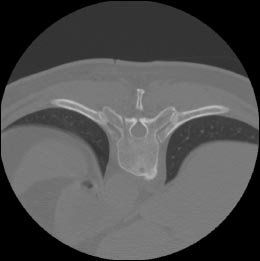Bone marrow procedures move into the 21st century
More than 700,000 biopsies are performed in the U.S. every year, but the technology has not always kept pace with cancer diagnosis and therapy. A new technique allows rapid and easy access to the marrow space.
ABSTRACT: More than 700,000 biopsies are performed in the U.S. every year, but the technology has not always kept pace with cancer diagnosis and therapy. A new technique allows rapid and easy access to the marrow space.

KENNETH SYMINGTON, MD

FELIX MARTINEZ, JR., MD
For many years, the standard methods of performing bone marrow procedures in patients with varying bone densities have remained unchanged. This is despite the fact that the manual method of performing bone trephine biopsies has significant limitations, including patient discomfort, needle-related adverse events, and operator dependence.
The new and developing field of intraosseous medicine is finally bringing much-needed change to bone marrow procedures. Intraosseous (IO) vascular access was commonly used by World War II medics to resuscitate soldiers dying from hemorrhagic shock. The technique of infusing fluids and drugs into patients in trauma and resuscitative situations via IO space fell out of favor once the war ended. But in the 1980s, a pediatrician from the Cleveland Clinic observed IO being used during a cholera epidemic in India, and the technique became standard in pediatric advanced life support.
More recently, the American Heart Association and other international organizations have recommended that it be employed as a first alternative to delayed or failed IV via peripheral vascular access. Now IO has been adapted for use in bone marrow procedures.
In this article, we offer a brief history of bone marrow procedures and how the IO approach is revolutionizing the field (see Table).
DID YOU KNOW?Carpal tunnel troubleWrist sprains, carpal tunnel syndrome, and similar ergonomic problems have become a concern for operators who perform bone marrow procedures on a regular basis, especially in patients with hard bones.
Drawbacks of manual manipulation
Bone marrow samples are difficult to evaluate and are plagued by varying consistency. In one large study, the investigators noted that only 42% of their biopsy specimens were adequate for accurate diagnosis (J Clin Path 45:1105-1108, 1992).
Inadequacy of specimens has huge significance. The patients who come to us may be seriously ill; their treatment depends on the accuracy of the diagnosis we render. To do this properly, we need core samples of sufficient size and as free as possible from crush artifact and trabecular distortion. It stands to reason that the larger the amount of tissue taken, the greater the chance of detecting focal lesions.
The manipulation of the needles used to retrieve the samples is an influential factor in sample quality: The less manipulation, the greater the possibility of achieving an intact sample of sufficient size. Getting good core samples has historically been highly dependent on operator expertise. Even with experience, approximately 5% of procedures result in "dry taps," or no specimens (Yonsei Med J 27:100-105, 1986). A significantly higher percentage (20%) yield inadequate amounts of tissue. Acquisition of samples of sufficient size with good cellular viability in as short a time as possible is the key objective of bone marrow biopsy and aspiration. Current manual techniques often limit our ability to do this.
Then there is the problem of patient discomfort and pain. A complete bone marrow biopsy with manual techniques can take up to 30 minutes. Studies have shown that duration of the procedure is the most important factor influencing the intensity of patient pain (Acute Pain 6:9-14, 2003). Patients with hard bones often suffer a great deal because of the difficulty of accessing the marrow space (often described as a "non-collapsible" vein).
With imaging guidance, interventional radiologists who perform bone marrow procedures offer conscious sedation, which can reduce procedure-related pain. Still, with manual needles we often need to "muscle" patients whose bones are particularly hard or in whom the lesions are difficult to locate. Often we have problems securing the needle to stand on top of the bone cortex.
In addition to pain, there is the morbidity and mortality associated with bone marrow procedures, even those carried out by experienced operators. A 2003 retrospective series highlighted some of the more common adverse events, including needles breaking off the manual devices and being left behind in the patient (Br J Haematol 121:949-951, 2003).
TABLEBone marrow biopsy and aspiration kits currently on the market
The dawn of the drill

FIGURE 1

FIGURE 2OnControl needle in the CT-targeted vertebral body (
top
). Post-biopsy at same vertebral body showing the resultant bone channel after removal of bone plug specimen (
bottom
). Images courtesy of Dr. Symington.
While IO access is not new, the technique has undergone a revolution with the introduction of a drill (OnControl from Vidacare) that allows rapid and easy access to the marrow space (see Figures 1 and 2).
The drill eliminates the need for constant manipulation of the needle. It addresses and overcomes some of the limitations of manual manipulation: Easy insertion means a smoother procedure for the operator and for patients, even those with hard bones. Because the procedure is much faster-we can obtain aspirate and biopsy in less than one minute-it is possible to increase the number of procedures that can be performed in a day. The drill also allows for long, untraumatized cores to be collected. When sufficient core length cannot be collected, the procedure must be repeated or an open biopsy performed, exposing patients to additional pain and risk as well as driving up costs.
Questions have arisen about the possibility of core biopsy cellular damage, such as thermal and crush artifact, because of the dynamics of drilling. In our experience, this has not been a problem. We have captured large, artifact-free core samples. As a result, we have seen a major improvement in the quality of our extractions and are able to provide our pathologists with adequate and easy-to-read samples.
With the introduction of this new technology, we hope that we will see a new era in bone marrow aspiration and biopsy. Many physicians dread performing these procedures as much as patients dread undergoing them. We have come so far in so many other areas of oncology; it is about time that we see improvements in an area where there has been little change in several decades.
Disclosures:
Dr. Symington and Dr. Martinez do not have any disclosures.
Newsletter
Stay up to date on recent advances in the multidisciplinary approach to cancer.
Elevating the Quality of Cancer Care Via Cross-Department Collaboration
Experts from Sibley Memorial Hospital discuss how multidisciplinary work has enhanced outcomes such as survival and resource use at their institution.